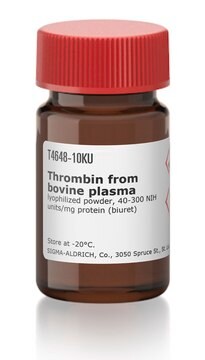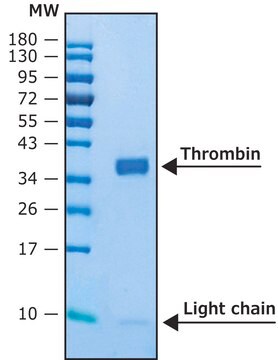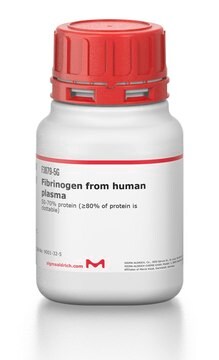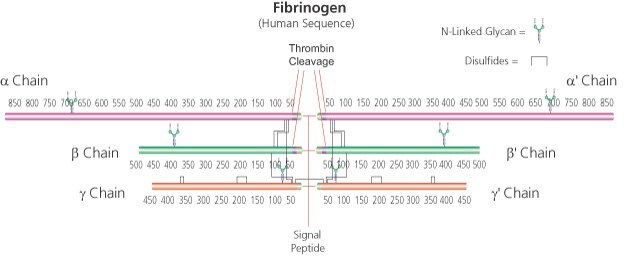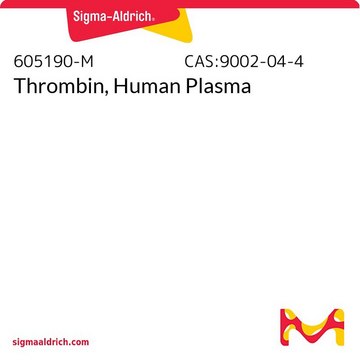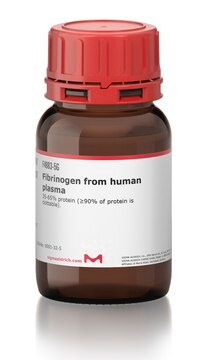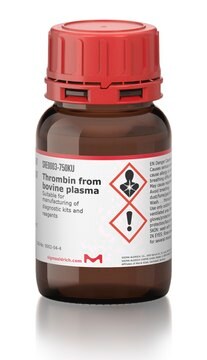T4393
Thrombin from human plasma
lyophilized powder, 1500-3500 NIH units/mg protein (E1%/280, 18.3), suitable for cell culture
Synonym(s):
Factor IIa
About This Item
Recommended Products
biological source
human plasma
Quality Level
sterility
sterile
form
lyophilized powder
specific activity
1500-3500 NIH units/mg protein (E1%/280, 18.3)
technique(s)
cell culture | mammalian: suitable
impurities
HIV, hepatitis B and hepatitis C, tested negative
UniProt accession no.
storage temp.
−20°C
Gene Information
human ... F2(2147)
Looking for similar products? Visit Product Comparison Guide
General description
Application
- as a medium supplement for the pre-treatment of endothelial cell culture prior to confocal microscopy and enzyme linked immunosorbent assay (ELISA)
- in the gelatinization of mesenchymal stem cells (MSCs) for preparing fibrin–MSC construct
- for screening serine protease inhibitor, OGTI from frog skin secretion
Biochem/physiol Actions
Unit Definition
Reconstitution
Analysis Note
Disclaimer
inhibitor
Signal Word
Danger
Hazard Statements
Precautionary Statements
Hazard Classifications
Resp. Sens. 1
Storage Class Code
10 - Combustible liquids
WGK
WGK 3
Flash Point(F)
Not applicable
Flash Point(C)
Not applicable
Certificates of Analysis (COA)
Search for Certificates of Analysis (COA) by entering the products Lot/Batch Number. Lot and Batch Numbers can be found on a product’s label following the words ‘Lot’ or ‘Batch’.
Already Own This Product?
Find documentation for the products that you have recently purchased in the Document Library.
Customers Also Viewed
Articles
Thrombin Factor IIa is an endolytic serine protease that selectively cleaves the Arg--Gly bonds of fibrinogen to form fibrin and release fibrinopeptides A and B.
Our team of scientists has experience in all areas of research including Life Science, Material Science, Chemical Synthesis, Chromatography, Analytical and many others.
Contact Technical Service

